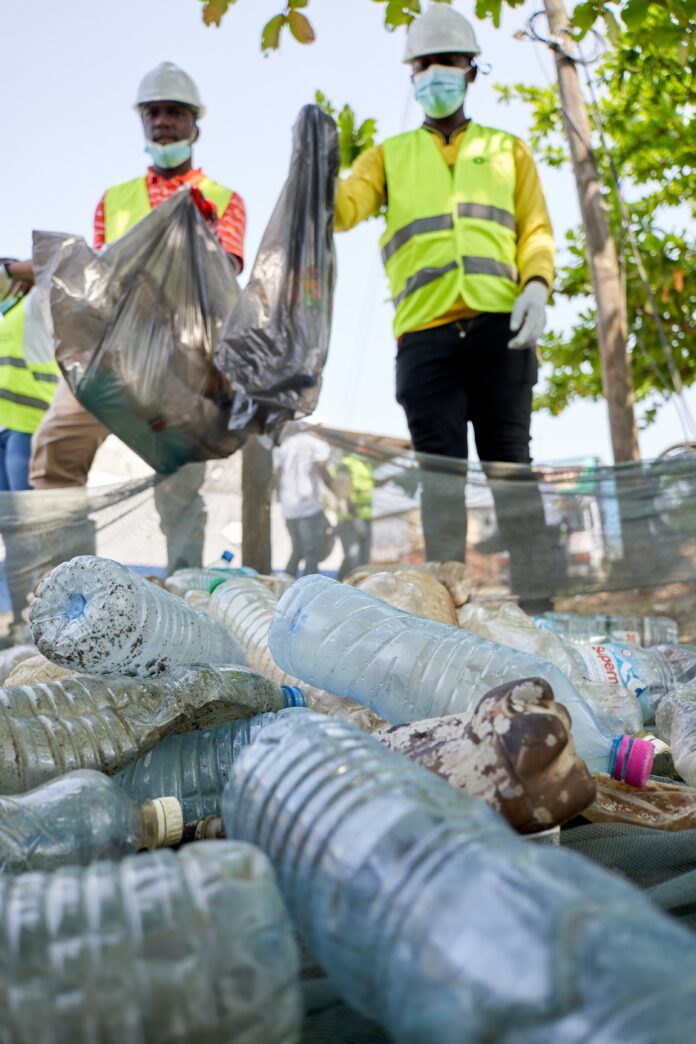
By
From the moment Alicia Garza, Patrisse Cullors, and Opal Tometi created the hashtag #blacklivesmatter in 2013, they were sending a powerful message to the world: this isn’t just a fleeting moment in history.
A decade later, millions of social media posts — 26 million on Instagram alone — bear witness to the collective demand for change. And the movement has spread from being a national organization to having over 40 local chapters nationwide.
And with Black people in Phoenix, Cleveland, and Charleston, South Carolina, all lacking access to clean air, local Black Lives Matter chapters are stepping up to do something about it.
Taking Action in Phoenix
The Phoenix chapter of Black Lives Matter is committed to taking an inclusive approach to civil rights and environmental justice.
Sarra Tekola was one of the founding members of Black Lives Matter Phoenix in 2017, soon after the killing of Trayvon Martin. The belief that climate justice is racial justice is at the heart of their work.
“Black Lives Matter Phoenix started an environmental justice coalition — multiracial, bilingual coalition — fighting to make sure our communities are represented,” Tekola says.
“Black Lives Matter Phoenix started an environmental justice coalition — multiracial, bilingual coalition — fighting to make sure our communities are represented, SARAA TEKOLA, BLACK LIVES MATTER PHOENIX
Tekola, who uses they/them pronouns, was inspired to get involved with climate justice because their father was a climate refugee. They became serious about climate justice work while participating in anti-fossil fuel protests at the University of Washington in 2012.
Being involved in climate activism is “especially important in the state we’re in right now, as we get to the point where we’re literally running out of water,” Tekola says. “I’m involved in food justice, community gardening, and educating our community about the water crisis.”
Other chapters are doing the same.
Fighting Air Pollution in Cleveland
In Cleveland, Black Lives Matter attracts a diverse array of organizers who have gone head-to-head with major corporations.
Jennifer Lumpkin, a Black Lives Matter organizer and board member with the Cleveland chapter, was one of several organizers who marched to downtown Cleveland to protest the development of a jail intended to be built in an area known as Slavic Village. The land was previously a Standard Oil Refinery.
“There were petroleum vapors and toxic, hazardous materials that could have been breathed in not only by construction members, but it would be within the groundwater,” Lumpkin says.
“The water around the site was undrinkable, and would have been a hazard for folks in jail and doing construction.”
After she and fellow organizers spoke up against the jail’s construction, a steering committee decided not to proceed with the project, and a judge ruled against it.
“It’s no longer being built on that site, the direct result of BLM sounding the alarm for the environmental hazards,” Lumpkin says.
There are several industrial and waste sites located in Cleveland. From refineries to plants, Cleveland is an example of a city that heavily relies on fossil fuel extraction for income. The state of Ohio produced 28 billion barrels of oil in 2019 alone.
It’s no longer being built on that site, the direct result of BLM sounding the alarm for the environmental hazards JENNIFER LUMPKIN, BLACK LIVES MATTER CLEVELAND
Toxic Air in Charleston
And the situation is just as bad in Charleston, South Carolina.
The predominantly Black area has an air pollution problem. Residents have asthma and chronic respiratory issues, and Black residents, who make up 43% of the community, are especially hit hard.
That’s why Black Lives Matter Charleston is taking a stand against plants — like Ingevity, a pine chemical plant located in North Charleston — and refineries.
“Charleston has a long history of environmental discrimination. From holding enslaved Africans to building smoke stack garbage incinerators on the Eastside, a predominantly Black community,” says Black Lives Matter organizer Marcus McDonald. McDonald has participated in demonstrations and conversations with city council members, and he’s a big believer in calling out city officials on social media to create pressure.
“Charleston BLM fights for climate justice by holding the city of Charleston and private entities accountable. Black people in Charleston have a long history of resiliency and resistance. We remain hopeful,” he says.
“Black people in Charleston have a long history of resiliency and resistance. We remain hopeful.”
MARCUS MCDONALD, BLACK LIVES MATTER CHARLESTON
According to the American Lung Association State of the Air Report, there were 30,826 adults with asthma and 23,900 people with COPD in Charleston County. In 2021, three plants in Charleston had dangerous levels of pollutants that surpassed federal standards. The Environmental Protection Agency called the pollutants “a family of poisonous, highly reactive gases.”
Together, these environmental activists are not giving up on the prospect of having clean air. Instead, they’re speaking out on behalf of Black folks who are suffering at the hands of air pollution.



